| XXXXXX |
XXXXXXXXXXXXXXXXXXXXXXXXXXXXXXXXXXXXXXXXXXXXXXXXXXXXXXXXXXXXXXXXXXXXXXX |
XXXXXX |
XXXXXX |
XXXXXX |
| |
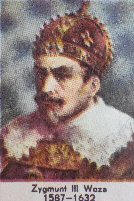
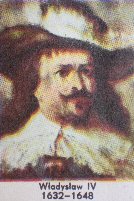
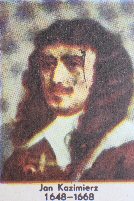
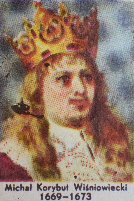
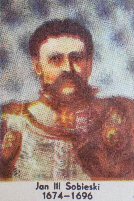 |
|
|
|
| |
The seventeenth century was marked by
monumental events that shaped the course of history.
One of the most significant occurrences was
the Thirty Years' War,
which devastated much of Central Europe.
This conflict was primarily a religious struggle between Protestants and
Catholics. The Peace of
Westphalia in 1648 eventually ended the war and laid the
foundation for modern state sovereignty. In England, the century
witnessed the English Civil War, culminating in the temporary overthrow
of the monarchy. The execution
of King Charles I in 1649 was a pivotal moment in the assertion
of parliamentary power.
The century also saw the rise of absolutism, exemplified by the reign of
Louis XIV of France.
Louis XIV's rule was characterised by the centralisation of power and
the construction of the Palace
of Versailles. Scientific advancement flourished with figures
such as Galileo Galilei and
Isaac Newton revolutionising our understanding of the natural
world.
The seventeenth century was also the age of exploration, with European
powers expanding their territories overseas. The establishment of
colonies in the Americas and Asia had profound economic and cultural
impacts. Trade networks expanded, leading to increased wealth but also
to the exploitation of indigenous populations.
The Baroque era in art
and music reflected the dramatic and ornate styles of the period.
Philosophical thought evolved, with
René Descartes
introducing a new approach to scientific and existential inquiry. The
century ended with significant political changes, including
the Glorious Revolution in
England. This revolution reinforced constitutional monarchy and
parliamentary democracy.
The seventeenth century's complex tapestry of war, culture, science, and
politics set the stage for the modern world.
Its legacy continues to influence contemporary society and governance
structures.
Understanding these events is crucial for comprehending the development
of Western civilisation.
Thus the seventeenth century remains a pivotal era in global history.
|
|
|
|
| 1600 |
|
|
|
|
| 1600 |
|
|
|
|
| 1601 |
|
|
|
|
| 1602 |
|
|
|
|
| 1603 |
THE STUARTS
King James VI
Stuart was named King
James I of England, Wales and Ireland. Despite this, Scotland
remained an entirely independent/ separate nation. James is perhaps most
famous for providing a new
translation of the Bible, into English. This is known as the King
James Version, and is widely used in Protestant churches to this day.
Catholic Priests were ordered to leave the country. This meant that his
reign was marked by religious turmoil, culminating in
The Gunpowder Plot in
1605, where a group of disillusioned Catholics plotted to blow up the
houses of Parliament. |
|
|
|
| 1604 |
|
|
|
|
| 1605 |
The Gunpowder
Plot. As a measure of control rebellions in Ireland, the
government encouraged Scottish and English Protestants to form "plantations"
in the northern province of Ulster, Ireland. These settlers took the
land from Catholic landowners, and this was then repeated in other areas
of the country. The settlements that they formed were known as
plantations.
James I believed in the "Divine Right of Kings", which was
essentially that the king had been chosen by God to rule. This attitude
led him to believe that he didn't need Parliament's help to rule the
country. Unfortunately, this was an attitude that he passed down to his
son - with disastrous consequences. |
|
|
|
| 1606 |
|
|
|
|
| 1607 |
|
|
|
|
| 1608 |
|
|
|
|
| 1609 |
|
|
|
|
| 1610 |
|
|
|
|
| 1611 |
|
|
|
|
| 1612 |
|
|
|
|
| 1613 |
|
|
|
|
| 1614 |
|
|
|
|
| 1615 |
|
|
|
|
| 1616 |
|
|
|
|
| 1617 |
|
|
|
|
| 1618 |
|
|
|
|
| 1619 |
|
|
|
|
| 1620 |
|
|
|
|
| 1621 |
|
|
|
|
| 1622 |
|
|
|
|
| 1623 |
|
|
|
|
| 1624 |
|
|
|
|
| 1625 |
When James I died, his son
Charles I Stuart (Karol)
ur. 1600, zm. 1649 inherited the throne. Karol
był jedynym brytyjskim władcą, który został obalony przez poddanych i
ścięty.
Charles, upon discovering that Parliament would not agree to his
policies, he attempted to rule without their approval.
He dissolved
Parliament in 1629. Anyway, unable to raise money for his own army,
Charles was forced to recall Parliament to ask it for funds, but they
refused. Moreover, Parliament demanded control of the English army.
Furious Charles entered the House of Commons and attempted to arrest
five parliamentary leaders. The result of this was that in 1642, civil
war broke out.
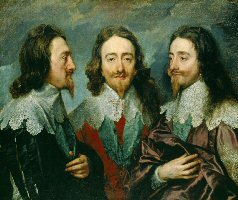 Karol I na portrecie Antoniego van Dycka z lat 1635-1636
Karol I na portrecie Antoniego van Dycka z lat 1635-1636
Antoni van
Dyck ur. 1599, zm. 1641 - flamandzki malarz epoki baroku, znany
głównie jako autor portretów. |
|
|
|
| 1626 |
|
|
|
|
| 1627 |
|
|
|
|
| 1628 |
|
|
|
|
| 1629 |
|
|
|
|
| 1630 |
|
|
|
|
| 1631 |
|
|
|
|
| 1632 |
|
|
|
|
| 1633 |
|
|
|
|
| 1634 |
|
|
|
|
| 1635 |
|
|
|
|
| 1636 |
|
|
|
|
| 1637 |
|
|
|
|
| 1638 |
|
|
|
|
| 1639 |
|
|
|
|
| 1640 |
|
|
|
|
| 1641 |
|
|
|
|
| 1642 |
Civil war
broke out. On one side were the supporters of the king, known as
Cavaliers, and on the
other were those who supported Parliament, known as
Roundheads. By 1646 the
Roundheads had established a dominant victory, led by
Oliver Cromwell. Defeat
in battles such as Marston Moor
and Naseby left
the king's army crippled; eventually he was taken prisoner. Stubborn to
the last, Charles refused to negotiate with Parliament. In 1649 he was
executed. |
|
|
|
| 1643 |
|
|
|
|
| 1644 |
|
|
|
|
| 1645 |
|
|
|
|
| 1646 |
|
|
|
|
| 1647 |
|
|
|
|
| 1648 |
|
|
|
|
| 1649 |
In 1649 king Charles I was executed. For the first time
in hundreds of years, England no longer had a monarch. The nation
declared itself a republic,
which was known as the Commonwealth. Then Cromwell brutally
established the authority of Parliament and smashed Scottish hopes of
placing Charles's son, Charles II, on the throne. Scotland had not
agreed to the execution of the king, and sent an army into England with
the intent of restoring the monarchy. After defeat at
Dunbar and
Worcester,
Charles II fled to the
Netherlands.
Cromwell was named Lord
Protector, and ruled the country until his death in 1658.
Following Cromwell's death, his son Richard was announce Lord Protector.
This did not work, as Richard lacked his father's ability to control
both the army and government. He was not a real leader, and abdicated in
May 1659. |
|
|
|
| 1650 |
|
|
|
|
| 1651 |
|
|
|
|
| 1652 |
|
|
|
|
| 1653 |
|
|
|
|
| 1654 |
|
|
|
|
| 1655 |
|
|
|
|
| 1656 |
|
|
|
|
| 1657 |
|
|
|
|
| 1658 |
|
|
|
|
| 1659 |
Richard
the Cromwell's son abdicated. |
|
|
|
| 1660 |
Parliament made contact with
Charles II (1630-1685).
He was invited to return from exile, and crowned King Charles II of
England, Wales, Scotland and Ireland. He established amicable (ugodowy)
relatonship with Parliament. He re-established the the Church of England
as the official church, and initiated
the Habeas Corpus Act of 1679. |
|
|
|
| 1661 |
Isaac Newton’s
(1642-1726) whole academic life, from 1661 to 1696, was spent at
Trinity College Cambridge,
first as an undergraduate and then as a Fellow from 1667. Charles II
was a keen scientist, and sought to increase public awareness of the
world around us. The Royal Navy Society was formed, to promote
scientific knowledge. A key member of this society was Isaac Newton, who
discovered gravity. He went on to publish famous works such as
Mathematical Principles of
Natural Philosophy. Newton also discovered that white light is
made up of the colours of the rainbow. |
|
|
|
| 1662 |
|
|
|
|
| 1663 |
|
|
|
|
| 1664 |
|
|
|
|
| 1665 |
The plague arrived once more and devastated London. Over
100,000 people died from the disease in 1665-1666. This was known as
The Great Plague. It was
far lesser plague in scale than the previous Black Death in 1348. |
|
|
|
| 1666 |
In September 1666,
the Great Fire of London
devastated the city. Starting in a bakery on Pudding Lane, the blaze
spread outwards, carried by a strong gale and the close proximity of the
largely wooden buildings. The fire lasted from Sunday until Wednesday.
Remarkably only 6 deaths have been officially recorded. Original St
Paul's Cathedral were destroyed, but killed rats and fleas, and in the
aftermath London was largely rebuilt as a spacious and open city - to
reduce the risk of such disasters occurring in future.
Events such as these were detailed in
the famous diary of Samuel Pepys,
which was later published and can still be read to this day. |
|
|
|
| 1667 |
|
|
|
|
| 1668 |
|
|
|
|
| 1669 |
|
|
|
|
| 1670 |
|
|
|
|
| 1671 |
|
|
|
|
| 1672 |
|
|
|
|
| 1673 |
|
|
|
|
| 1674 |
|
|
|
|
| 1675 |
|
|
|
|
| 1676 |
|
|
|
|
| 1677 |
|
|
|
|
| 1678 |
|
|
|
|
| 1679 |
The Habeas
Corpus Act of 1679. This essentially meant that no person could
be held unlawfully as a prisoner, and that every prisoner had the right
to a court hearing. This piece of legislation is still in use today. |
|
|
|
| 1680 |
|
|
|
|
| 1681 |
|
|
|
|
| 1682 |
|
|
|
|
| 1683 |
|
|
|
|
| 1684 |
|
|
|
|
| 1685 |
Charles II died
without legitimate heirs and his brother
James II took the throne.
James II was a strong Roman Catholic, with an obvious bias towards
members of the Catholic faith. Just as his father Charles I had done,
James II did not try to reach agreements with Parliament and even
arrested many bishops from the Church of England. James had 3 children -
two elder daughters and a young son. His two daughters were Protestant.
This was to be his downfall. |
|
|
|
| 1686 |
|
|
|
|
| 1687 |
|
|
|
|
| 1688 |
The Glorious
Revolution. James's daughter Mary was married to
William of Orange, the
ruler of the Netherlands. William was fiercely Protestant. In 1688,
backed by members of Parliament and supporting groups in England;
William's army sailed into England. They met no resistance from James,
who fled, and William was swiftly pronounced king. This event has been
nicknamed the "Glorious Revolution", because of the fact that there was
so little bloodshed in William's campaign, and that it put an end to the
idea of a monarch ruling without the need for Parliament. During
the reign of William and Mary,
a number of important constitutional bills were passed. The first of
these, passed during their coronation, was
the Declaration of Rights.
This made it official constitution that the monarch would not be able to
raise taxes or deliver justice without agreement from parliament. Once
the Declaration was signed,
parliament became the central governing body of law and justice in
England. |
|
|
|
| 1689 |
CONSTITUTIONAL
MONARCHY In 1689 was signed
the Bill of Rights, which
gave parliament the power to decide who could be monarch. This monarch
had to be a Protestant, and a new parliament would be elected every 3
years (now five years). In order to push through decisions, the king or
queen needed to have advisers who could seal a majority of votes in the
two Houses of Parliament: the House of Lords and the House of Commons.
Similarly to today, there were two main groups in parliament - the
Tories (today the Conservative Party) and the Whigs (comparable to
today's Liberal Democrats). All of these changes marked the beginning of
what is commonly known as constitutional monarchy.
In some places, constituencies were completely controlled by just one
rich family. These areas became known as "pocket
boroughs". In other less well-off places, there were barely any
voters at all. These areas were known as "rotten
boroughs". |
|
|
|
| 1690 |
James II attempted to regain the throne, but failed. He
was defeated at the Battle of
Boyne in Ireland (1690), and Scottish rebellions in support of
James were largely crushed. Scottish clans were thereby required to take
an oath, swearing fealty (wierność) to
William III (William II in
Scotland). Failure to take the oath had brutal consequences. For
example, the MacDonald clan of
Glencoe were slaughtered for being late to swear fealty, thus
making many Scottish people both fearful and distrustful of the new
government. This killing is known as
the Glencoe Massacre, and
the names of those who died are commemorated on the Glencoe Massacre
Memorial Monument, which can be found in Scotland. Based on this, James
II continued to garner (zbierać) support in Scotland. His supporters
became known as Jacobites,
and continued this cause long after James II's death. |
|
|
|
| 1691 |
|
|
|
|
| 1692 |
|
|
|
|
| 1693 |
|
|
|
|
| 1694 |
|
|
|
|
| 1695 |
Protestant refugees from France fled to England after
being treated as criminals in their own country. These people were known
as Huguenots. Britain
also attracted Jews from the first time since the Middle Ages, who
settled in London. Britain also made important developments in
free press. Newspapers
could legally operate without the need for a government licence. Now
many more new newspapers sprang up, unburdened from the control of the
government. |
|
|
|
| 1696 |
|
|
|
|
| 1697 |
|
|
|
|
| 1698 |
|
|
|
|
| 1699 |
|
|
|
|
| XXXXXX |
XXXXXXXXXXXXXXXXXXXXXXXXXXXXXXXXXXXXXXXXXXXXXXXXXXXXXXXXXXXXXXXXXXXXXXX |
XXXXXX |
XXXXXX |
XXXXXX |
| |
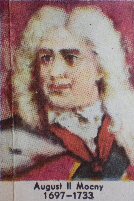
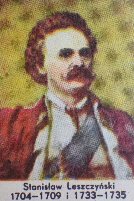
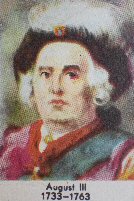
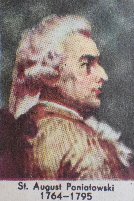 |
|
|
|
| |
The eighteenth century was marked by
profound political and social changes across Europe and the world.
One of the most significant events was
the Enlightenment, an
intellectual movement that emphasised reason and individualism. This
period saw the rise of influential philosophers such as
Voltaire, Rousseau, and Kant.
The American Revolution,
occurring between 1775 and 1783, was a pivotal moment that challenged
colonial rule.
It led to the establishment of the United States of America as an
independent nation.
Meanwhile the French Revolution,
beginning in 1789, dramatically reshaped the political landscape of
France. This revolution introduced ideas of liberty, equality, and
fraternity, which resonated globally.
The Industrial Revolution
also commenced in the late eighteenth century, transforming economies
and societies through mechanisation. Advancements in technology and
manufacturing processes spurred urbanisation and changed labour
patterns. In the realm of arts and culture, the eighteenth century
witnessed the flourishing of classical music with composers like
Mozart and Haydn.
Colonial expansion continued, with European powers competing for
territories in Africa, Asia, and the Americas.
The partition of Poland in 1772
was a significant geopolitical event that erased Poland from the map for
over a century. Scientific progress was notable, with figures such as
Benjamin Franklin making groundbreaking discoveries. The century also
experienced numerous wars, including
the Seven Years' War,
which had global ramifications. Diplomatic alliances and treaties during
this time shaped the future of international relations.
Social hierarchies began to be questioned, setting the stage for later
democratic reforms.
Education and literacy rates improved, partly due to the spread of
Enlightenment ideals.
Religious tolerance slowly increased, although conflicts based on faith
persisted. The eighteenth century laid the foundations for the modern
world through its transformative events. Understanding this century is
crucial for comprehending the development of contemporary political and
social structures. |
|
|
|
| 1700 |
|
|
|
|
| 1700 |
|
|
|
|
| 1701 |
|
|
|
|
| 1702 |
William and Mary's successor was
Queen Anne (1665-1714).
Despite numerous pregnancies, Anne died without any surviving children.
This created a huge deal of uncertainty, and tensions arose between
England, Wales, Ireland and Scotland. Thus, in
1707, the Act of Union
was created. |
|
|
|
| 1703 |
|
|
|
|
| 1704 |
|
|
|
|
| 1705 |
|
|
|
|
| 1706 |
|
|
|
|
| 1707 |
The Act of Union.
This was an act that created the
Kingdom of Great Britain, and linked England and Scotland
together. It meant that Scotland was no longer an independent country
but at the same time could maintain its own legal, educational and
religious system. |
|
|
|
| 1708 |
|
|
|
|
| 1709 |
|
|
|
|
| 1710 |
|
|
|
|
| 1711 |
|
|
|
|
| 1712 |
|
|
|
|
| 1713 |
|
|
|
|
| 1714 |
THE GEORGIAN ERA |
|
|
|
| 1715 |
|
|
|
|
| 1716 |
|
|
|
|
| 1717 |
|
|
|
|
| 1718 |
|
|
|
|
| 1719 |
|
|
|
|
| 1720 |
|
|
|
|
| 1721 |
|
|
|
|
| 1722 |
|
|
|
|
| 1723 |
|
|
|
|
| 1724 |
|
|
|
|
| 1725 |
|
|
|
|
| 1726 |
|
|
|
|
| 1727 |
|
|
|
|
| 1728 |
|
|
|
|
| 1729 |
|
|
|
|
| 1730 |
|
|
|
|
| 1731 |
|
|
|
|
| 1732 |
|
|
|
|
| 1733 |
|
|
|
|
| 1734 |
|
|
|
|
| 1735 |
|
|
|
|
| 1736 |
|
|
|
|
| 1737 |
|
|
|
|
| 1738 |
|
|
|
|
| 1739 |
|
|
|
|
| 1740 |
|
|
|
|
| 1741 |
|
|
|
|
| 1742 |
|
|
|
|
| 1743 |
|
|
|
|
| 1744 |
|
|
|
|
| 1745 |
|
|
|
|
| 1746 |
|
|
|
|
| 1747 |
|
|
|
|
| 1748 |
|
|
|
|
| 1749 |
|
|
|
|
| 1750 |
|
|
|
|
| 1751 |
|
|
|
|
| 1772 |
|
|
|
|
| 1753 |
|
|
|
|
| 1754 |
|
|
|
|
| 1755 |
|
|
|
|
| 1756 |
Wybuch Wojny Siedmioletniej wypowiedzianej przez Wielką Brytanię,
Francji (1756-1763) - wojna pomiędzy Wielką Brytanią, Prusami i
Hanowerem a Francją, Austrią, Rosją, Szwecją i Saksonią. Wojna w
Koloniach zakończyła się Pokojem
Paryskim i przypieczętowała klęskę Francji, która utraciła na
rzecz Wielkiej Brytanii część posiadłości zamorskich: m.in. Kanadę i
inne kolonie w Ameryce i Indiach. |
|
|
|
| 1757 |
|
|
|
|
| 1758 |
|
|
|
|
| 1759 |
|
|
|
|
| 1760 |
|
|
|
|
| 1761 |
|
|
|
|
| 1762 |
|
|
|
|
| 1763 |
Król Jerzy III (GeorgeIII) wydał
proklamację, w której ograniczył osadnictwo w Ameryce Brytyjskiej do
linii Appalachów: Jest sprawiedliwe, rozsądne i
zgodne z naszymi interesami by, dla bezpieczeństwa naszych kolonii,
narody lub plemiona indiańskie, z którymi utrzymujemy kontakty i które
żyją pod naszą opieką, nie były molestowane i niepokojone.
Otrzeźwienie przyniosło siedemnastomiesięczne krwawe
powstanie Pontiaka
(1763-1766) - rewolta plemion indiańskich przeciwko brytyjskiemu
panowaniu w Ameryce Północnej. Jego główny przywódca Pontiak był wodzem
plemienia Ottawa z rejonu Wielkich Jezior.
Z powodu wzrostu kosztów państwa i wyczerpaniu po
wojnie siedmioletniej zakończonej w 1763, próbowano pozyskać fundusze od
obywateli poprzez podniesienie podatków, co wkrótce miało stać się jedną
z przyczyn wybuchu amerykańskiej wojny o niepodległość (1775-1783).
|
|
|
|
| 1764 |
|
|
|
|
| 1765 |
|
|
|
|
| 1766 |
|
|
|
|
| 1767 |
|
|
|
|
| 1768 |
|
|
|
|
| 1769 |
|
|
|
|
| 1770 |
|
|
|
|
| 1771 |
|
|
|
|
| 1772 |
|
|
|
|
| 1773 |
|
|
|
|
| 1774 |
|
|
|
|
| 1775 |
Wybuch wojny o niepodległość Stanów Zjednoczonych. |
|
|
|
| 1776 |
|
|
|
|
| 1777 |
|
|
|
|
| 1778 |
|
|
|
|
| 1779 |
|
|
|
|
| 1780 |
|
|
|
|
| 1781 |
|
|
|
|
| 1782 |
|
|
|
|
| 1783 |
Podpisanie
Traktatu
Paryskiego w Wersalu, w którym to Wielka Brytania uznała
niepodległość Stanów Zjednoczonych. Naocznym świadkiem podpisania tego
traktatu był John Adams, szósty prezydent USA (1825-1829). W
konsekwencji powstało Amerykańskie państwo sięgające Missisipi. |
|
|
|
| 1784 |
|
|
|
|
| 1785 |
|
|
|
|
| 1786 |
|
|
|
|
| 1787 |
|
|
|
|
| 1788 |
|
|
|
|
| 1789 |
|
|
|
|
| 1790 |
|
|
|
|
| 1791 |
|
|
|
|
| 1792 |
|
|
|
|
| 1793 |
|
|
|
|
| 1794 |
|
|
|
|
| 1795 |
|
|
|
|
| 1796 |
|
|
|
|
| 1797 |
|
|
|
|
| 1798 |
|
|
|
|
| 1799 |
|
|
|
|





 Karol I na portrecie Antoniego van Dycka z lat 1635-1636
Karol I na portrecie Antoniego van Dycka z lat 1635-1636 


